Rock Fishing Tips & Guide
Rockfishing is one of the most effective and exciting fishing techniques out there! Oftentimes, fishable rock outcroppings lead out into the ocean like a jetty or a pier. Fishing from rocks can give fishermen access to species they couldn’t normally catch from shore.
Even if the rocks do not extend out into the waters you will be fishing, standing on rocks can give you a boost in casting distance as you will be higher up when you make your cast. If you want to experience the joys of rock fishing, keep reading as we cover what is needed before your fishing trip and what to do during it to maximise your success.
Disclosure: We only endorse products we’ve personally used or that have come highly recommended by our trusted peers. We’re proud affiliates for some of the products on our site, and as such, we may get a small commission if you purchase through one of our referral links. However, there’s no extra cost to you. Check out our affiliate disclaimer in our Privacy Policy if you’d like to learn more.
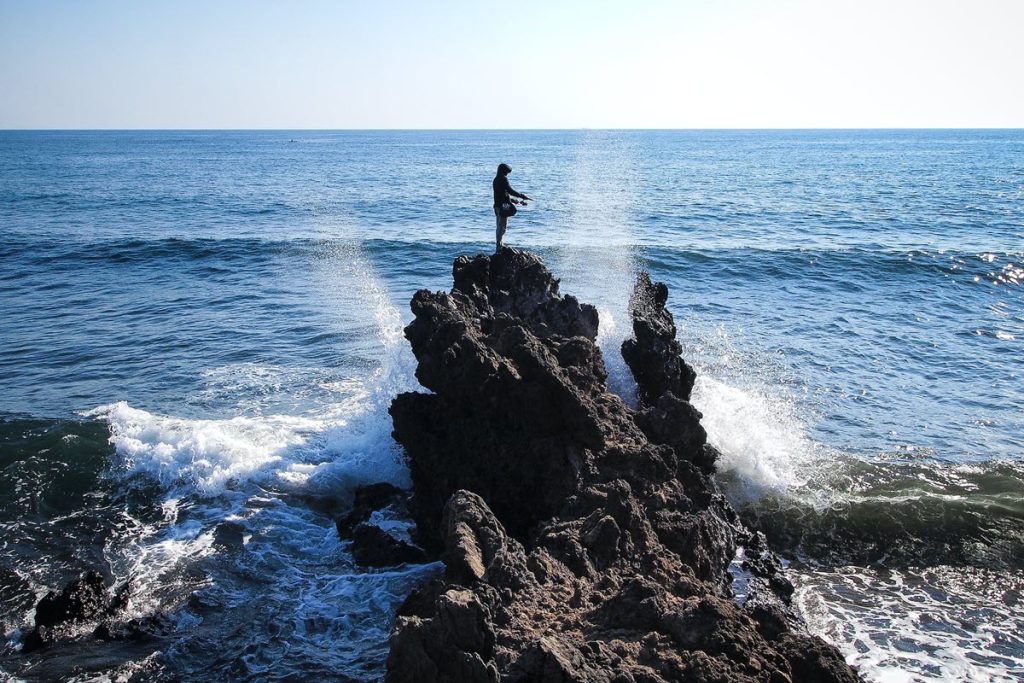
Rock Fishing Tips & Guide – Be Prepared
Preparation
It is extremely important to make sure you are fully prepared before your rock fishing excursion. Though rock fishing is widely considered one the most simple forms of fishing, you will still need to adequately prepare before heading to the rocks. Check the weather, wear proper clothes, gather your equipment ahead of time and be sure to have fresh bait from your local bait shop or frozen bait ready to go.
Rock Fishing Tips & Guide – Rods & Reels
Rock Fishing Rods & Reels
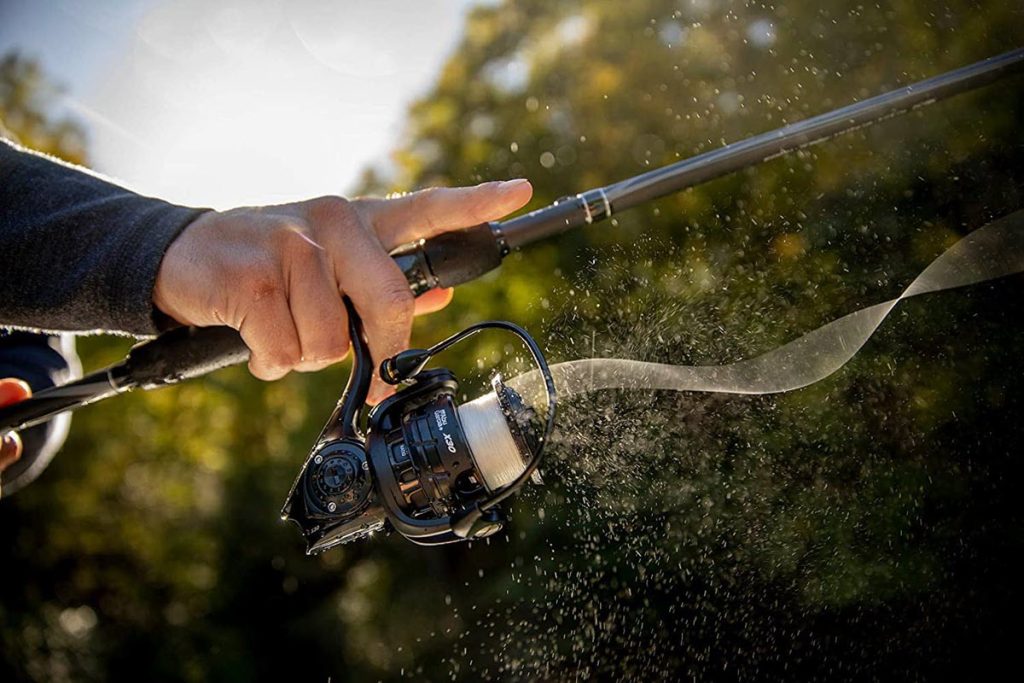
For a rock fishing rod, medium power and action will likely be suitable for most scenarios. Don’t go too light on the rod, or else if you are at a high elevation relative to the water, you will have a tough time pulling up a fish if it’s bigger than expected. It is important, though, to make sure you have a longer rod than is standard size. Size rocks naturally pose a danger to your fishing equipment and your chances of landing a fish; you will probably want a rod similar to a surf fishing rod length.
A minimum of 8 ft in length should be considered for a rock fishing rod. A solid size for an all-around rock fishing rod should be in the range of 10 – 14 ft. A longer rod will allow for casts farther away from hazardous obstacles in the water and more accurate targeting. If you know exactly which rocks you will be fishing, take a look at the elevation you will be fishing at relative to the sea level during both high and low tides to get a better assessment of what rod length is most suitable for your situation.
Of course, if you do this and see that you will be just fine using a shorter rod and transporting a longer rod will cause more trouble than good, go ahead and use the shorter rod for your rock fishing trips. Also, since rock fishing typically means dealing with a lot of salt spray, keep in mind you will want to look for a rod that is very resistant to corrosion in saltwater environments.
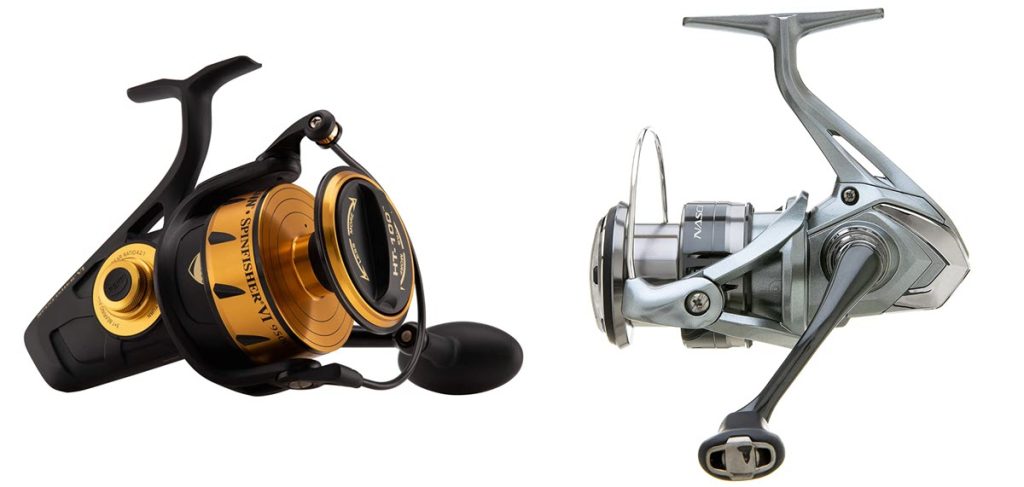
The rock fishing reel you use should follow a similar style to the rod you end up choosing. For your rock fishing reel, you will want to be sure to have a lot of drag power so you can stop fishing from running into rock crevices and cutting your line.
Having a lot of drag will also help you pull fish out of rocks if you are in the unfortunate situation of having to do so. Reels with a high gear ratio, meaning your reel will take in more yards per turn of the handle, are recommended so you can land the fish as quickly as possible after setting the hook.
If you can afford it, get a reel that is sealed, so that saltwater spray does not find its way into your reel’s insides. If you cannot get a reel that has a sealed body, after each rock fishing trip, you will need to rinse your reel with fresh water, or else the salt can cause serious corrosion. Even if you have a reel with a sealed body, it is good practice to rinse it with fresh water after any kind of saltwater fishing because, eventually, corrosion will occur over time.
Rock Fishing Tips & Guide – Mono, Fluoro & Braid
Rock Fishing Line

Since rocks can be highly abrasive and easily damage your fishing line, it is a good idea to go with either fluorocarbon or monofilament, which are both much more resistant to abrasion than braided line. Unless you are specifically targeting a large species of fish, anything from a 30-40 lb test line will be sufficient. Be sure to add a leader to your main line for extra protection against abrasion.
Rock Fishing Tips & Guide – Lures
Rock Fishing Lures

When figuring out what kind of lure is best for your rock fishing trip, you will need to assess several factors, such as water depth, the number of rocks in the water, and the type of bait fish or prey that are naturally in the area.
When fishing in an area that has shallow water and, therefore the risk of hooking rocks on the seafloor, use a lure that is lightweight or buoyant. Spoons, poppers, and soft plastic lures can work great in this kind of environment. As long as you reel at a consistent pace, you will not have to worry about your lure sinking to the bottom and losing it on a rock or other debris.
However, if the water you are fishing in is deeper and the fish are hanging out at the bottom, use a lure that will sink and stay deep in the water even when it is being reeled in at a fast pace. For this scenario, you can use hard plastics that are weighted, hard plastics with a big diving lip, or metal lures. If you are fishing in an area with a lot of jagged rocks and debris, you can try using a weighted, soft plastic with a j-hook to avoid the trouble that double treble hooks may cause.
Rock Fishing Tips & Guide – Baits
Rock Fishing Baits
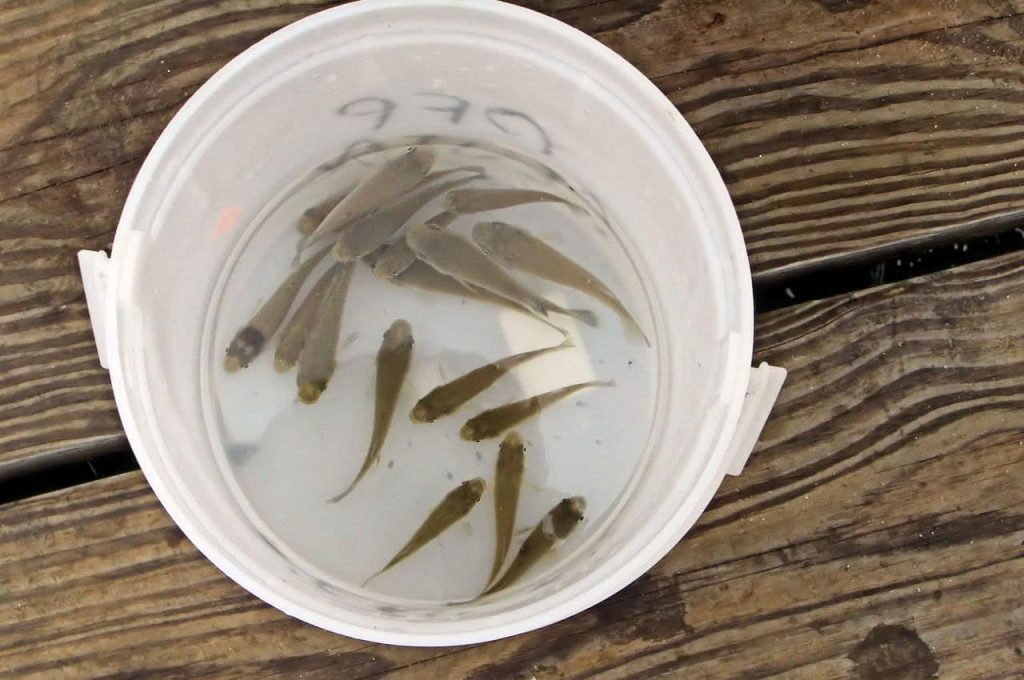
Baits that will work well for rock fishing include cut fish, shrimp, and worms. When choosing bait, head over to your local bait shop and find out what the fish are feeding on. In most cases, bait that is locally sourced performs better because it is what the fish are used to eating.
Perhaps even more important than the type of bait you are using is getting it to stay on the hook. When rock fishing, you will want to make sure your bait is very secure or else the currents and impact into the water when casting might tear it off. There is no point in having a bare hook in the water!
Rock Fishing Tips & Guide – Rigs
Rock Fishing Rigs
When making a rock fishing rig, you can choose a setup that is very similar to many surf fishing rigs. You will have the option of using one, two, or even three hooks, but it is probably best not to use any more than three.

For a simple rock fishing rig, you will need a hook, a leader, a swivel, and a sliding ball weight. Tie a hook and a swivel to opposite ends of the leader. Then, on the main line, place the sliding ball weight and tie the main line to the free end of the swivel. This basic rig will be able to handle any kind of rock fishing conditions that allow for bottom fishing.

For another easy rig to assemble, get a hook, a leader, a three-way swivel, and a drop-shaped weight. First, tie the hook to the leader and then the three-way swivel to the other end of the leader. You can then tie one of the two free ends of the swivel to the main line. Next, grab another piece of leader material, tie it to the last free end of the swivel, and finally, tie the weight to the other end of the extra leader material.
Both of these rigs are great choices for rock fishing!
7 Essential Rock Fishing Tips
Rock Fishing Tips #1
Use Berley To Attract Fish
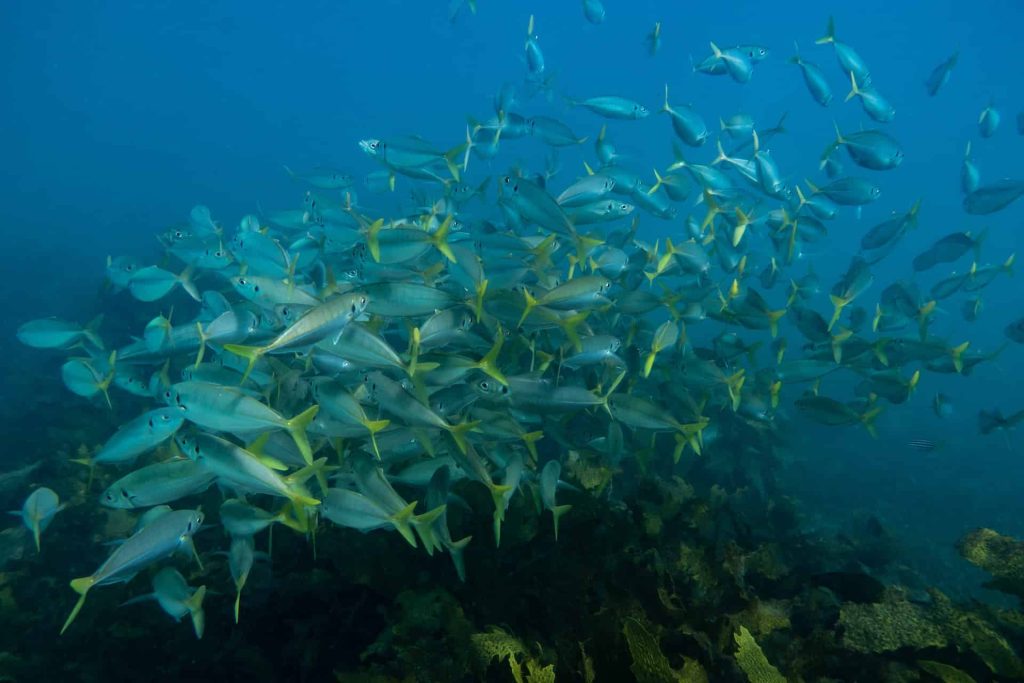
For those who are hearing of “berley” for the first time- berley is essentially chum. Movies and media have popularised the bloody, gut-filled, fish version of chum. However, berley can be anything from fish guts to pieces of bread. The main objective of berley is to get fish in a feeding mode, so they are more likely to bite when your bait enters the water.
A very common form of berley is white bread soaked in seawater with the addition of something such as cabbage or prawn shells in the mix. You can also add products like Ultrabite to your berley mix for potentially better results.
When using berley, make sure not to use it all at once and not to use too little at a time- there is a happy medium. If you use too much berley before you try to catch the fish, they may get full too early. It is best to use berley to keep the fish feeding and also sustain their interest. In between using the berley get your bait in the water as soon as possible to capitalise on the feeding frenzy you will have started.

Rock Fishing Tips #2
Try an Extra Hook on Your Rig
As mentioned earlier, you can add more than one hook to your rig. Using an extra hook on your rig gives you more opportunities to catch a greater number of fish. It is simple math; if you make 10 casts with only one hook, you are giving yourself the opportunity to catch only 10 fish. However, if your rig has two hooks on it, you now have the opportunity to catch up to 20 fish!
Rock Fishing Tips #3
Pack a Multi-Tool
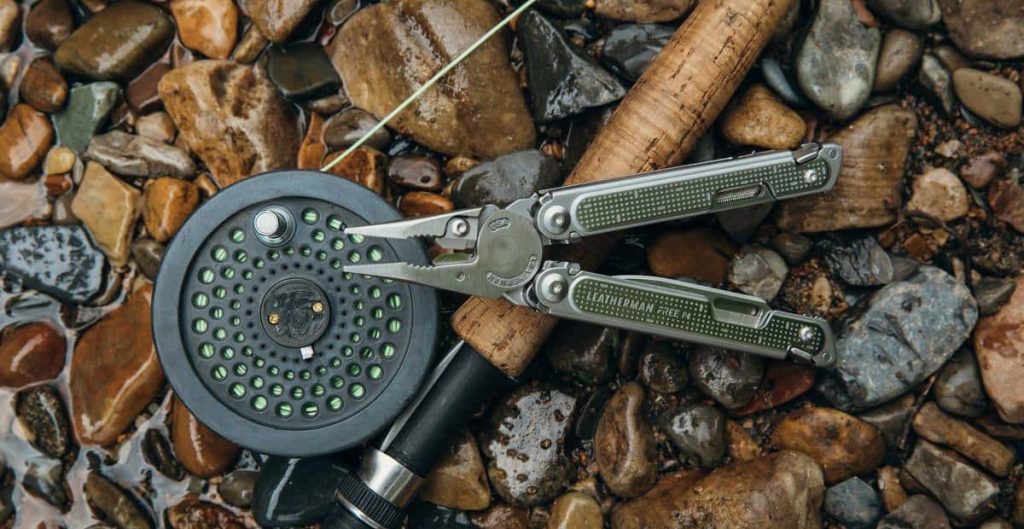
Packing a multi-tool is a great idea, no matter what kind of fishing you are doing. Multi-tools often have pliers, a knife, and scissors. Never go fishing without pliers and something that can cut the fishing line. If you are in the unfortunate situation of having your hook or lure stuck in a rock, it will be much easier to cut the line rather than try to pull on it until it breaks. Try to find a multi-tool that is resistant to saltwater corrosion.
Rock Fishing Tips #4
Carry a Catch Bag
If you plan on keeping the fish, you catch while rock fishing, you will want to carry a catch bag. For anglers who will be fishing for hours at a time, insulated fishing bags will help keep catches fresh. If you are causally fishing for a short amount of time, a simple mesh catch bag will do to make sure birds do not take any bites and to keep your catches in one place.
Rock Fishing Tips #5
Stay Mobile

When rock fishing, it is best not to plant yourself in one spot with the idea of never moving. Just like in every other type of fishing, if a spot is not working out for you, try moving to another area. It doesn’t have to be an entirely different location. A lot of times, a couple of dozen meters can make a huge difference depending on your fishing spot’s features.
If you end up catching a lot of fish in one area, the stress from your catches might spook other fish in the area. If this happens, you can try waiting a bit while fishing in another area before returning or just fishing in another spot altogether.
Rock Fishing Tips #6
Give Other Anglers Some Space

If you find a popular rock fishing spot, you may be competing for precious fishing space with lots of other anglers. If this is the case, be respectful to other anglers, and hopefully, the kindness will be reciprocal. Fishing territory has always been a sensitive subject among anglers, and usually, disputes are not worth their outcomes. Even though it may be frustrating at times, try to stay calm and work yourself into a fishing spot without getting into any fights.
Rock Fishing Tips #7
Clean Your Gear After Your Session
After your rock fishing session, clean all of your gear as soon as you can. The saltwater from the spray and humidity in the air will immediately start to corrode your gear as soon as it makes contact. The best way to handle this is to wash your gear with fresh water as soon as you get the opportunity.
Rock Fishing Tips & Guide – Techniques
Rock Fishing Techniques
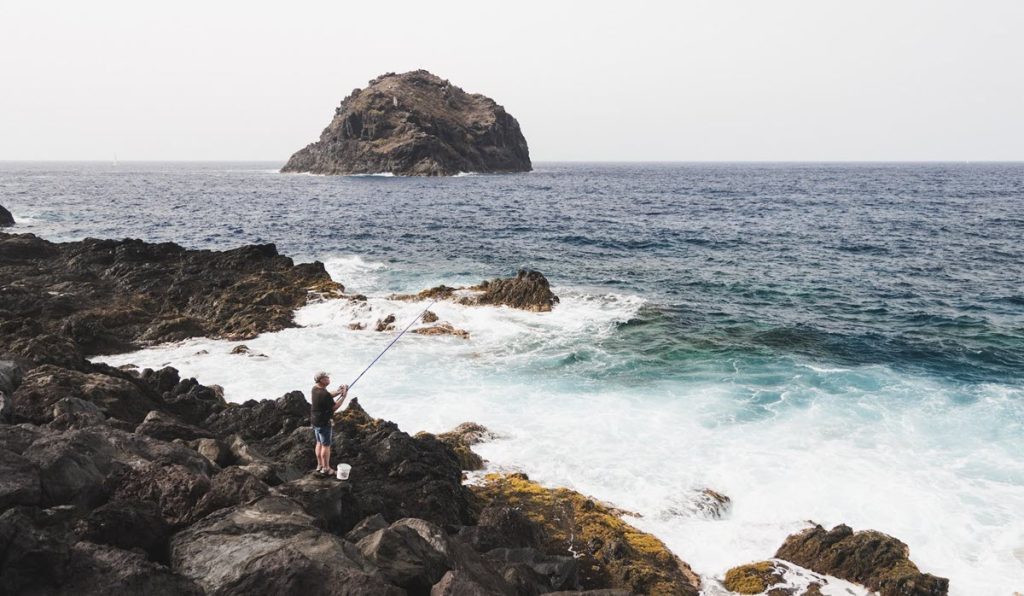
When determining what rock fishing techniques will work best for your spot, try to scout ahead at low tide and look for any important features to take into account later when you are ready to fish. Typically, however, you will want to try to get your bait to the bottom as fast as possible to avoid disturbance from the currents and waves.
When using lures, instead of reeling in the lure quickly without any variation in its stride, try reeling quickly for a few seconds and then letting it briefly sink before reeling again. Try our different variations of reeling until you find something that works.
6 Must-Know Rock Fishing Safety Tips
Rock Fishing Saftey Tip #1
Consider the Tide and Weather Conditions

Rock fishing is one of the most dangerous kinds of fishing because rocks are prone to become very slippery when wet. If it looks like it is going to rain during your rock fishing session, consider rescheduling for another time. If you would rather not reschedule, get the most grippy shoes you can find and stay away from the rock’s edges.
Depending on the height, a fall from a rock into the water during low tide can result in serious injuries on impact, and a fall into the water during high tide may result in drowning. Do not under any circumstances go rock fishing when there is a thunderstorm or one is imminent. Lightning is known to strike fishing rods, and no fish is worth getting struck by lightning for.
You can check the weather, swell, tide and more at the Australian Government’s Bureau of Meteorology website.
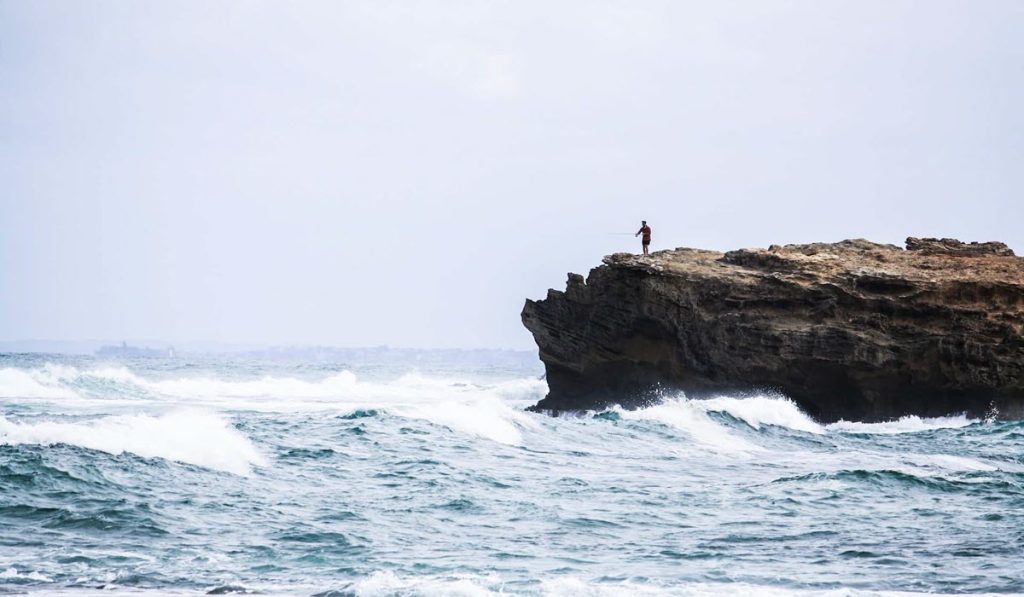
Rock Fishing Saftey Tip #2
Check for Swell Space
When rock fishing, check the swell space to determine how often waves will be crashing into the rocks and potentially hitting you with salt spray. If you are on lower rocks, when waves hit, they can cause a lot of water to fire up, potentially knocking you over. Pay attention to how often the waves are coming in and try to stay out of the way of constant crashing waves.
Rock Fishing Saftey Tip #3
Wear Appropriate Rock Fishing Clothes
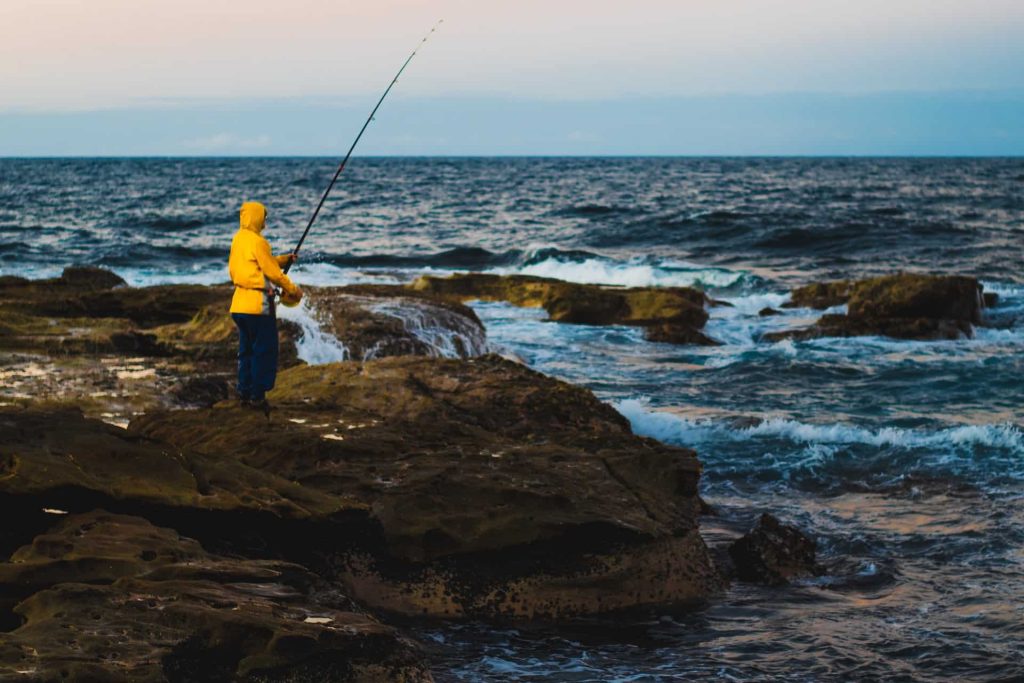
First off, rock fishing is best during the cooler winter months. Since you will be dealing with colder temperatures in a very humid environment, you will want to make sure you have enough clothing to stay warm. Not only that but clothing that is waterproof, at least as your outer layer, is recommended because of the salt spray that will hit you as waves crash into the rocks.
Even on a great day of fishing, feeling wet, cold, and overall miserable can ruin any fishing trip. Be sure to take something to cover your head, whether it’s a hat, hood, or beanie because about 30% of your body heat escapes from that part of your body.
However, do be careful not to wear too much clothing because, in the event of an emergency where you fall into the water, your clothes can weigh you down and increase the risk of drowning, especially on a day when the sea is rough. To help avoid this from happening, try to wear shoes that are able to sustain a firm grip even when rocks are wet and slippery.

Rock Fishing Saftey Tip #4
Improve Your Swimming Skills
If you cannot swim, do not go rock fishing! There is always a risk of falling in the water when rock fishing. Even if others are with you who can swim, if you fall in, you are then risking your own and their life.
Rock Fishing Saftey Tip #5
Never Go Rock Fishing by Yourself
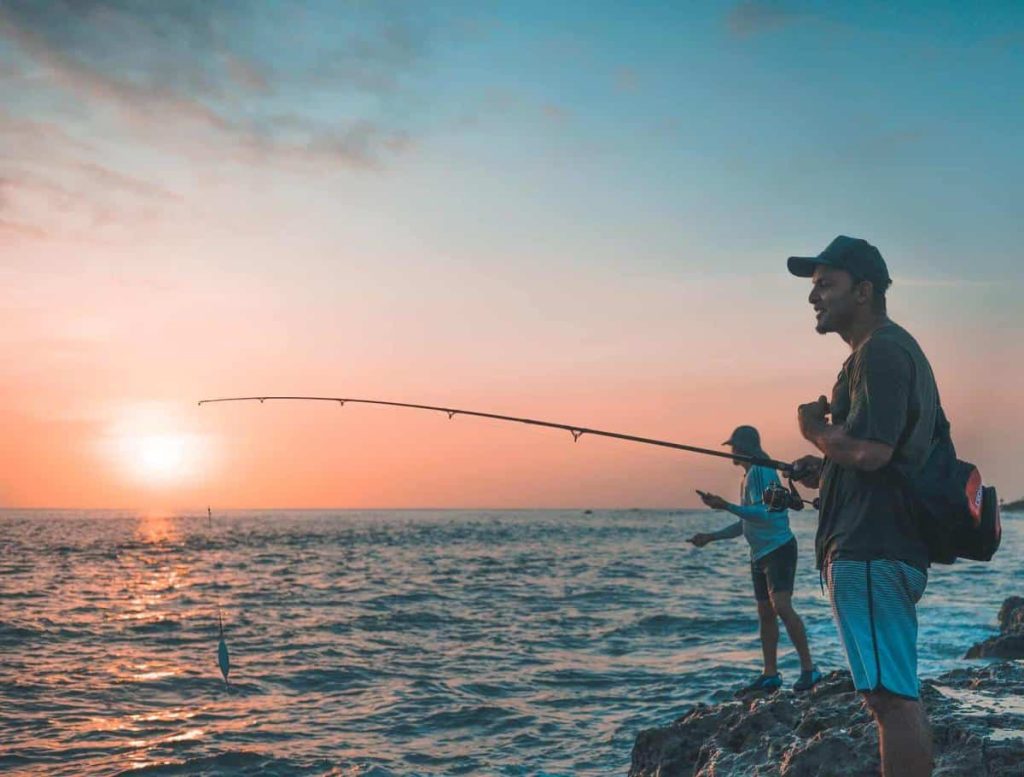
Rock fishing is not an activity that should ever be attempted solo. Things can go wrong as easily as stepping on the wrong rock. If you are to step on a slippery rock, fall and get knocked out, it is paramount that someone else is there to call emergency responders.
Rock Fishing Saftey Tip #6
What To Do in Times of Danger or Accidents
If you end up in a dangerous situation while rock fishing, try to stay calm and slowly work your way out of the problem if possible. Oftentimes emergencies are made worse when people panic, and it helps neither the party in danger nor the rescuing party when someone is panicking. That being said, do all you can to avoid getting into a dangerous situation and as mentioned above: never go rock fishing alone!
Rock Fishing Tips & Guide – Final Thoughts
Conclusion
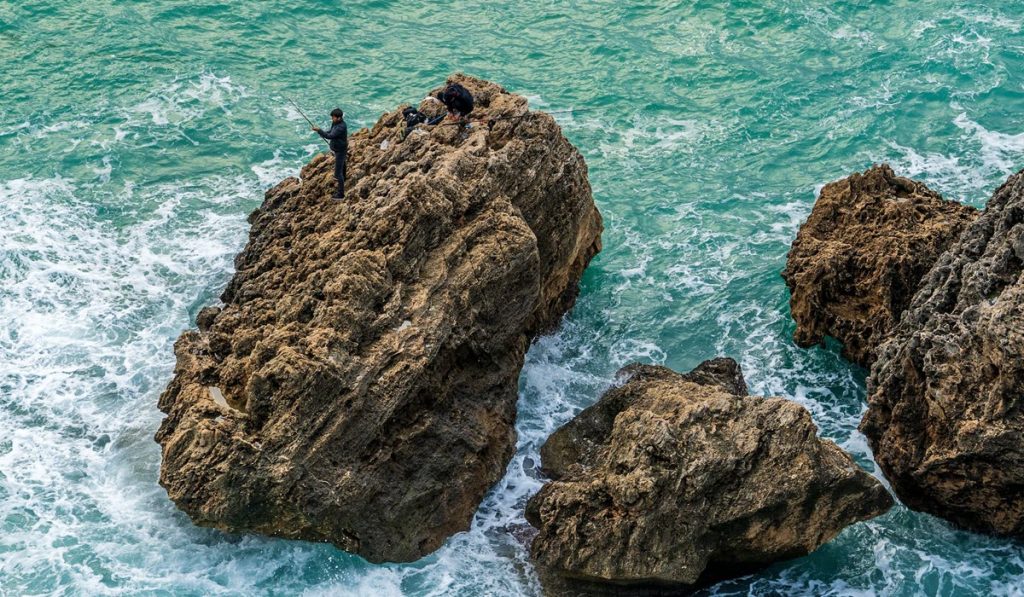
Rock fishing, although dangerous if not properly prepared for, can be one of the most worthwhile kinds of fishing. It provides a unique experience that many anglers find addicting. Rock fishing is also a great alternative in the winter when other types of fishing are slowing down. Make sure you get out and give rock fishing a shot, but be safe while doing so!
Frequently Asked Questions – Rock Fishing Tips
FAQ
What should I look for when rock fishing?
When rock fishing, look for the safest places on the rocks to fish, where the fish are most likely to be biting, and any rocks or debris in the water that your hooks may get caught on.
What is the best bait for rock fishing?
The best bait for rock fishing is usually cut fish, prawns, squid or worms. Alternatively, you could also use live bait such as yellowtail scab, mullet or squid.
What tides are best for rock fishing?
Usually, high tide is best for rock fishing because more fish will be closer to shore and in the rocks.
What size hooks for rock fishing?
There’s a wide range of species that you can catch while you’re rock fishing, so it depends on what fish you’re targeting. Generally, anything from size 3-6 hooks will work to catch a good mixed of species.
How do you fish rocks without getting snagged?
Scout ahead at low tide so you can avoid rocks that are hidden at low tide. You can also try using circle hooks which are less prone to snagging rocks than treble and j-hooks.
Is low tide good for rock fishing?
Low tide is usually not best for rock fishing because your bait or lure will be more affected by currents in shallow waters. That being said, rock fishing can still be good during low tide as long as the water is deep enough.
Where do you cast when fishing from rocks?
While rock fishing, anglers will cast from atop the rocks. You want to make sure you’re casting from a place where there aren’t too many potential snag spots in front of you.
What rods are best for rock fishing?
Rods that are longer than 8 ft in length and are of medium action and power are best for rock fishing.
What line should I use for rock fishing?
Monofilament or fluorocarbon are preferred for rock fishing because they are much more resistant to abrasive surfaces than braided line. If you choose to use braid, you should ensure you have a long mono or fluoro leader.
You Might Also Like:
If you enjoyed reading this blog post, you might also be interested in:
- 10 Best Fishing Chairs: Catch Your Breath and Catch Your Fish
- 8 Best Fishing Split Ring Pliers for Serious Anglers
- 8 Best Braid Scissors: Snip Your Way to Fishing Success
- Hooked on Comfort: 5 Best Fishing Stools You Need to Try
- How to Catch Murray Cod: 12 Masterful Tips For Success
- How to Catch Australian Bass | 13 Proven Tips by Pro Anglers
- 10 Best Fishing Pliers All Anglers Need in Their Tackle Box
- How to Catch Bonito: 13 Amazing Tips from Master Anglers
- How to Catch Mangrove Jack: 5 Tips for a Successful Fishing Trip
- 10 Best Waterproof Dry Bags to Keep Your Gear Safe and Dry
- 10 Best Fishing Gaffs for Landing Big Fish Quick & Easily
- 10 Best Waterproofing Sprays to Keep Your Gear Bone-Dry
- 14 Best Live Bait Buckets to Keep Your Fishing Game Strong
- 12 Best Fishing Backpacks for the Avid Angler in 2023
- Best Mono Fishing Line for 2023: Our Top 12 Trusted Picks
Tags:
#Rock Fishing Tips & Guide, #Rock Fishing Tips Beginners, #Rock Fishing Tips Safety, #Rock Fishing Tips Ultimate Guide, #Rock Fishing Tips & Essentials

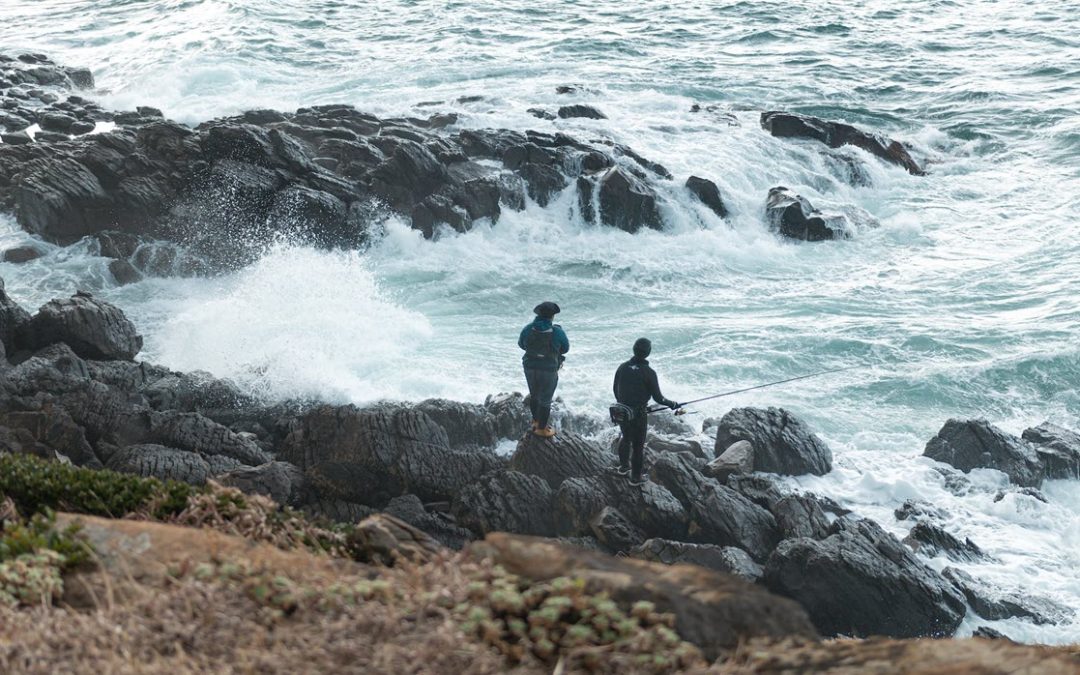
Recent Comments